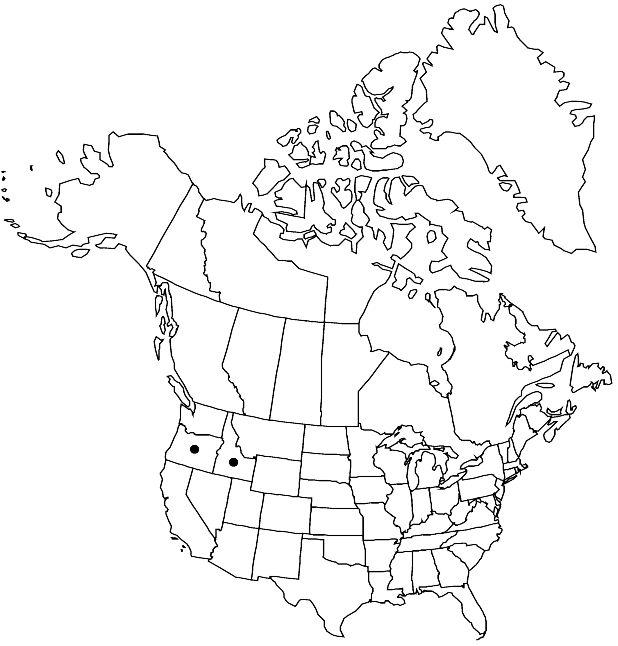Difference between revisions of "Stanleya confertiflora"
Fl. N.W. Amer., 59. 1897.
FNA>Volume Importer |
FNA>Volume Importer |
(No difference)
| |
Revision as of 20:20, 24 September 2019
Annuals or biennials; (glaucous), glabrous throughout. Stems erect, unbranched, (slightly ribbed), 2–6(–8) dm. Basal leaves (often withered by flowering); blade obovate to ovate, margins entire. Cauline leaves sessile; blade (fleshy), lanceolate, (2.2–)4–13(–16) cm × (5–)10–30(–40) mm, (smaller distally, base auriculate to sagittate), margins entire. Racemes dense, (slightly or not elongated in fruit). Fruiting pedicels horizontal to divaricate-ascending, 10–20(–26) mm. Flowers: sepals oblong-linear, 6–12 mm; petals yellow becoming whitish, narrowly linear to filiform, (12–)14–25 × 0.5–1.5 mm, (margins crisp), claw (nearly linear), 5–11 mm, slightly wider at base; filaments 12–17 mm; anthers 3–4.5 mm; gynophore (6–)10–18 mm. Fruits suberect to divaricate-ascending, slightly curved inward, (torulose), subterete, 2–5.2(–6) cm × 1.5–2.2 mm; ovules 40–62 per ovary; style 0.6–1.7 mm. Seeds oblong, 1.5–2.5 × 0.8–1 mm.
Phenology: Flowering Apr–Jun.
Habitat: Barren clay slopes in sagebrush communities, heavy clay flats, loose soil mounds, dry sandy grounds, alkaline meadows and flats
Elevation: 600-1500 m
Discussion
Of conservation concern.
Stanleya confertiflora is distributed in Gooding, Owyhee, and Washington counties in Idaho, and in Baker, Harney, and Malheur counties in Oregon.
Selected References
None.
